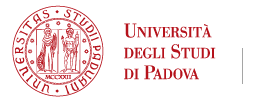
SPOTLIGHT: DiBio Zebrafish Facility
Pubblicato il: 01.09.2020 08:00
SPOTLIGHT: DiBio Zebrafish Facility
The zebrafish (Danio rerio) is a popular model organism, whose embryonic translucency, rapid development, high fertility, and genetic tractability make it an ideal system for studying development and disease.
The Department of Biology at the University of Padova (DiBio) hosts one of the largest centers in the country for zebrafish husbandry and distribution. The DiBio Zebrafish Facility was established in 2000, promoted by Prof. Francesco Argenton, a pioneer of zebrafish research in Italy. Currently, thanks also to the financial support from EU, University of Padova and Fondazione Cariparo, the center represents one of the most important reference hubs for dissemination of animal care practices and protocols, and for technical advice. As today, the facility supports the work of about twenty research laboratories, and a dozen of Italian and international collaborators.
Infrastructure:
At present, the DiBio Zebrafish Facility hosts 1,500 tanks with a large collection of wild type, mutant and transgenic lines, for a total of about 450 different alleles, organized in two fish rooms. The center is equipped with Tecniplast aquatic systems and Tritone robot for automatic feeding. In support of the activity, the facility includes two micro-injection/service rooms and two changing rooms.
Facilities and Instrumentation:
The DiBio Zebrafish Facility is equipped with:
- 1 upright confocal system (C2+, Nikon Instruments)
- 3 stereo microscopes equipped with fluorescence and high-end imaging capability (Leica
Microsystems)
- 1 high throughput behavior tracking system (Daniovision, Noldus)
- 9 stereo microscopes with visible light (Nikon Instruments, Leica Microsystems, Zeiss)
- 3 CCD/CMOS cameras (Nikon Instrument, Leica Microsystems);
- 7 workstations for imaging analysis and database management;
- 1 hypoxia chamber (BioSpherix);
- 2 liquid nitrogen cryobanks (Cryogenic Locator 8, 100 L, and Locator 6 plus, 184 L; 2 ml vial
capacity: 1800 + 6000 tubes; equipped with alarmed Thermo Level Monitor, ThermoFisher);
- 5 micro-injection workstations (WPI)
- 1 glass pipette puller (Sutter Instruments)
- 3 artemia systems
Live stocks and frozen lines: The center maintains three wild type strains, about 70 mutants and about 80 transgenic lines. Of note, the center is worldwide leader in the production and maintenance of a large collection of fluorescence-based reporter lines to track cell signaling cascades. The center offers storage for frozen gametes from about 300 fish lines.
Technologies: Zebrafish breeding and handling; embryo micro-injection, cell transplantation and drug treatment; morpholino-mediated gene knock-down; mRNA over-expression; CRISPR-Cas9 genome editing; Tol2-mediated transgenesis; immuno-histochemistry, whole-mount in situ hybridization and live imaging; sperm freezing and IVF; zebrafish video tracking.
Publications: see here
Personnel: Director: F. Argenton; Vice-Director: N. Tiso; Manager: M. Milanetto; other Scientific Committee members: L. Dalla Valle, M. Santoro, P. Bonaldo, E. Moro, M. Dal Maschio. Veterinarian: C. Zatti.
Web Site and Service Booking: Info available at https://www.biologia.unipd.it/servizi/servizi-alla-ricerca/servizi-dipartimentali/zebrafish-facility/guidelines/
Contacts: For inquiries (lines, services, training), please contact: zebrafish.biologia@unipd.it





